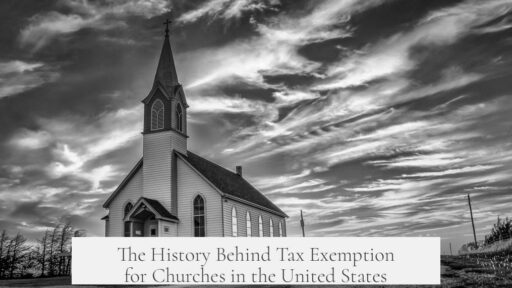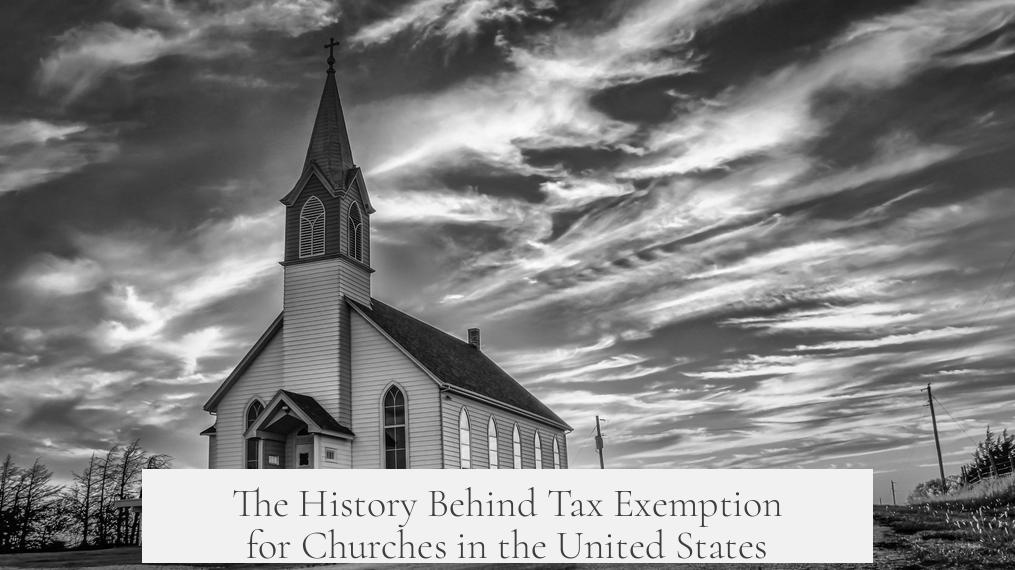Churches in the United States became officially tax exempt through a combination of historical practices, legislative actions, and judicial rulings, culminating in explicit federal tax exemption laws starting in the late 19th century.
Before the founding of the United States, tax exemptions for churches already existed, tracing back to medieval England. However, the colonial governments, such as in Massachusetts, often levied taxes to fund churches. Massachusetts was the last colony to end this practice, doing so with its 1833 constitution. This early history shows that tax treatment of religious institutions has fluctuated over time and across regions.
Modern tax exemption status for churches in the U.S. depends on local, state, and federal statutes. There is no universal automatic exemption; instead, specific laws grant religious organizations relief from certain taxes. States generally exempt church property from real estate taxes, while the federal government exempts church income from taxation.
The first official federal tax exemption for churches appeared in 1894 with the passage of the Tariff Act. At that time, the federal government briefly re-established an income tax. This legislation explicitly excluded churches from this new income taxation, marking the first time Congress formally recognized churches as exempt from federal taxes.
Shortly after, in 1895, the Supreme Court invalidated the federal income tax in the Pollock case, but the exemption for churches soon returned with the ratification of the 16th Amendment in 1913. This amendment authorized Congress to levy an income tax, and religious organizations continued to enjoy exemptions from these domestic taxes. This exemption has remained a feature of U.S. tax law for over a century.
Despite this broad exemption, it is not absolute. For example, the Tax Cuts and Jobs Act (TCJA) of 2017 introduced a 21% excise tax on fringe benefits paid to employees, which initially did not clearly exempt churches. Many churches unexpectedly received tax bills. Congress corrected this oversight in 2019 by extending an exemption to religious nonprofits retroactively to the TCJA’s passage.
The 1970 Supreme Court case Walz v. Tax Commission of the City of New York is a landmark decision that clarified the constitutional and social rationale for church tax exemption. Frederick Walz argued that churches not paying property tax unfairly raised his property taxes. The Court upheld the exemption, reasoning that it reflected a policy of “benevolent neutrality.” The rationale is that these exemptions neither promote nor inhibit religion but recognize churches as beneficial community institutions.
The Court emphasized that tax exemptions are granted to various nonprofit entities that serve the public good — including hospitals, libraries, and charitable groups — not only churches. It stressed that exemption status is dynamic: groups lose it if they no longer meet the criteria, and new entities can qualify when appropriate.
| Aspect | Summary |
|---|---|
| Historical Origins | Medieval English precedent; colonial taxation of churches ended by early 19th century. |
| Federal Exemption Begins | Tariff Act of 1894 exempted churches from income tax. |
| Income Tax and 16th Amendment | Income tax reinstated in 1913; church exemptions preserved. |
| Supreme Court Decision | Walz v. Tax Commission upheld church property tax exemption on constitutional grounds. |
| Limitations | Fringe benefit tax applied in TCJA but later exempted again. |
| State and Local Law | Varies, but all states allow some form of church property tax exemption. |
At the state and local level, tax exemption of places of worship is widespread and often enshrined in state constitutions. The uniform federal treatment and broad acceptance reflect a long-standing American principle. The government’s approach aims at neutrality, avoiding either favoring or withholding support from any religion.
In effect, church tax exemption has evolved from historical traditions into legally codified policies rooted in constitutional interpretation and public policy. This status helps insulate religious organizations from government interference through taxation, allowing them to operate without undue fiscal burdens. However, the exemption is carefully defined and monitored to ensure it applies only to organizations meeting nonprofit and community-benefiting criteria.
- Tax exemption for churches predates the U.S., rooted in English and colonial practices.
- The 1894 Tariff Act first granted official federal income tax exemption to churches.
- The 16th Amendment secured ongoing income tax authority, with church exemptions maintained.
- Walz v. Tax Commission (1970) affirmed property tax exemptions as constitutionally permissible.
- Exemptions reflect a policy of government neutrality towards religion, not sponsorship.
- Exemptions exist at federal, state, and local levels, with varying specific rules.
- Tax laws like the TCJA may impact churches but can be corrected via legislation.
- Exemption status is subject to ongoing legal and legislative oversight to ensure compliance.




